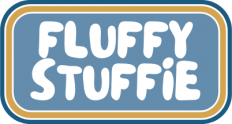In an increasingly complex world, the simple stuffed animal remains a surprisingly effective tool in the therapeutic realm. With a multi-billion-dollar industry behind it, the business of stuffed animals isn’t child’s play—it’s a serious player in the mental health arena. This is especially critical in a post-pandemic world, where mental health issues are on the rise and therapists are seeking various avenues for treatment.
Therapeutic Power of Stuffed Animals
Psychologists and therapists have long used stuffed animals as “transitional objects” to help children—and even adults—cope with various emotional challenges. Transitional objects act as a replacement for the caregiver’s comforting presence when they are not immediately available, offering emotional stability and reducing anxiety. While young children are the most obvious beneficiaries, adults too can derive comfort from their plush companions.
Dr. Jane Harrison, a child psychologist, points out that “Stuffed animals provide a sense of familiarity and can act as an emotional anchor, especially in unfamiliar or stressful environments. They can represent comfort, security and even act as a non-judgmental confidante.”
Beyond the Pediatric: Adult Applications
Although transitional objects are most commonly associated with children, adults too can benefit. In various therapy types, such as cognitive behavioral therapy (CBT) or dialectical behavior therapy (DBT), stuffed animals serve as tactile grounding objects during exercises designed to combat symptoms of anxiety, PTSD, and other disorders.
Sensory Processing and Stress Reduction
Stuffed animals can be more than emotionally soothing; they can also be physically calming. Some are designed with additional sensory features, like weighted stuffing or textured fabrics, to provide extra tactile feedback. This can be especially helpful for individuals with sensory processing disorders, autism, or even generalized anxiety disorder.
The act of holding or hugging a stuffed animal stimulates the release of oxytocin, commonly known as the “love hormone,” leading to a reduction in cortisol, the body’s main stress hormone. It’s the same physiological response invoked by hugging a loved one.
Building Emotional Resilience
For both children and adults, teddy bears and other stuffed animals can act as a “safe space” for emotional expression. They can listen without judgment, can be hugged without reservation, and can help facilitate emotional communication. In therapy sessions, therapists sometimes use stuffed animals as proxy communicators for patients who find it difficult to directly express their feelings.
Mental Health Trends and Societal Implications
The role of teddy bears and stuffed animals in mental health treatment deserves greater recognition. As the world faces an uptick in stress, anxiety, and other mental health challenges, holistic and accessible solutions are crucial. Stuffed animals offer an affordable, readily available, and stigma-free resource that can augment more traditional forms of therapy. While a teddy bear is not a substitute for professional mental health care, its benefits as a supplementary therapeutic tool are increasingly undeniable. Whether helping a child navigate the complexities of growing up or offering a comforting touchstone for adults in therapy, stuffed animals are uniquely positioned at the intersection of tactile comfort and emotional well-being.
And in an increasingly complex and stressful world, that attribute should not be underestimated. Shop for stuffed animals: Click here
